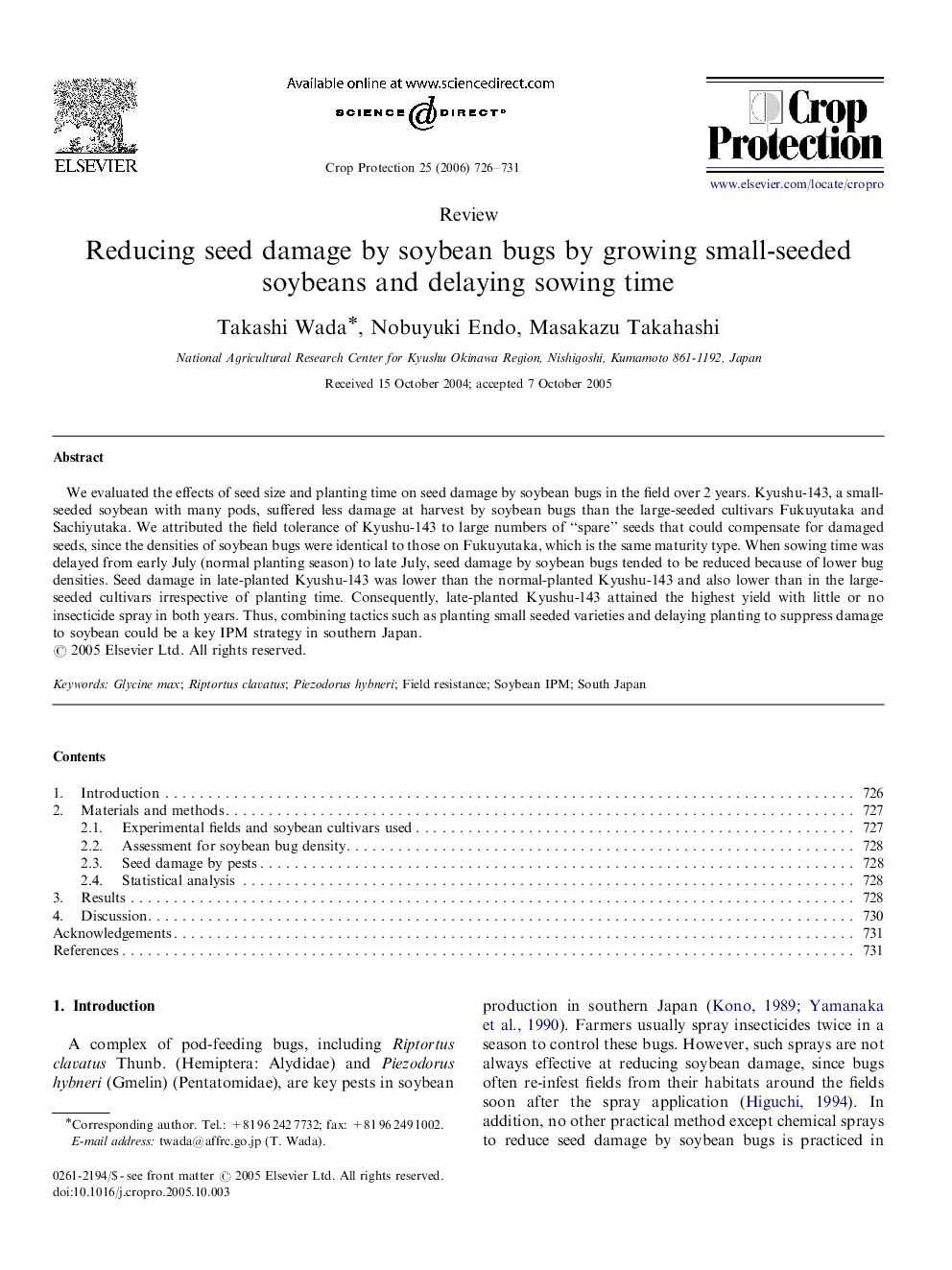| Article ID | Journal | Published Year | Pages | File Type |
|---|---|---|---|---|
| 4507996 | Crop Protection | 2006 | 6 Pages |
We evaluated the effects of seed size and planting time on seed damage by soybean bugs in the field over 2 years. Kyushu-143, a small-seeded soybean with many pods, suffered less damage at harvest by soybean bugs than the large-seeded cultivars Fukuyutaka and Sachiyutaka. We attributed the field tolerance of Kyushu-143 to large numbers of “spare” seeds that could compensate for damaged seeds, since the densities of soybean bugs were identical to those on Fukuyutaka, which is the same maturity type. When sowing time was delayed from early July (normal planting season) to late July, seed damage by soybean bugs tended to be reduced because of lower bug densities. Seed damage in late-planted Kyushu-143 was lower than the normal-planted Kyushu-143 and also lower than in the large-seeded cultivars irrespective of planting time. Consequently, late-planted Kyushu-143 attained the highest yield with little or no insecticide spray in both years. Thus, combining tactics such as planting small seeded varieties and delaying planting to suppress damage to soybean could be a key IPM strategy in southern Japan.
